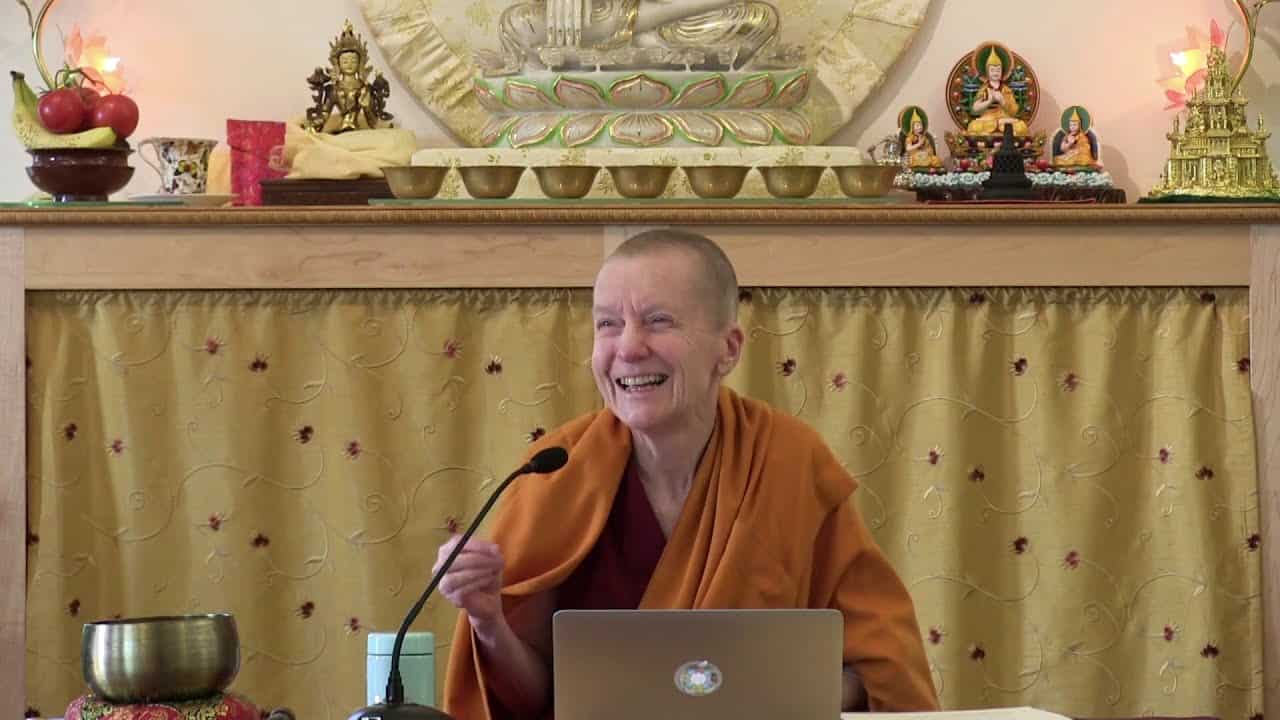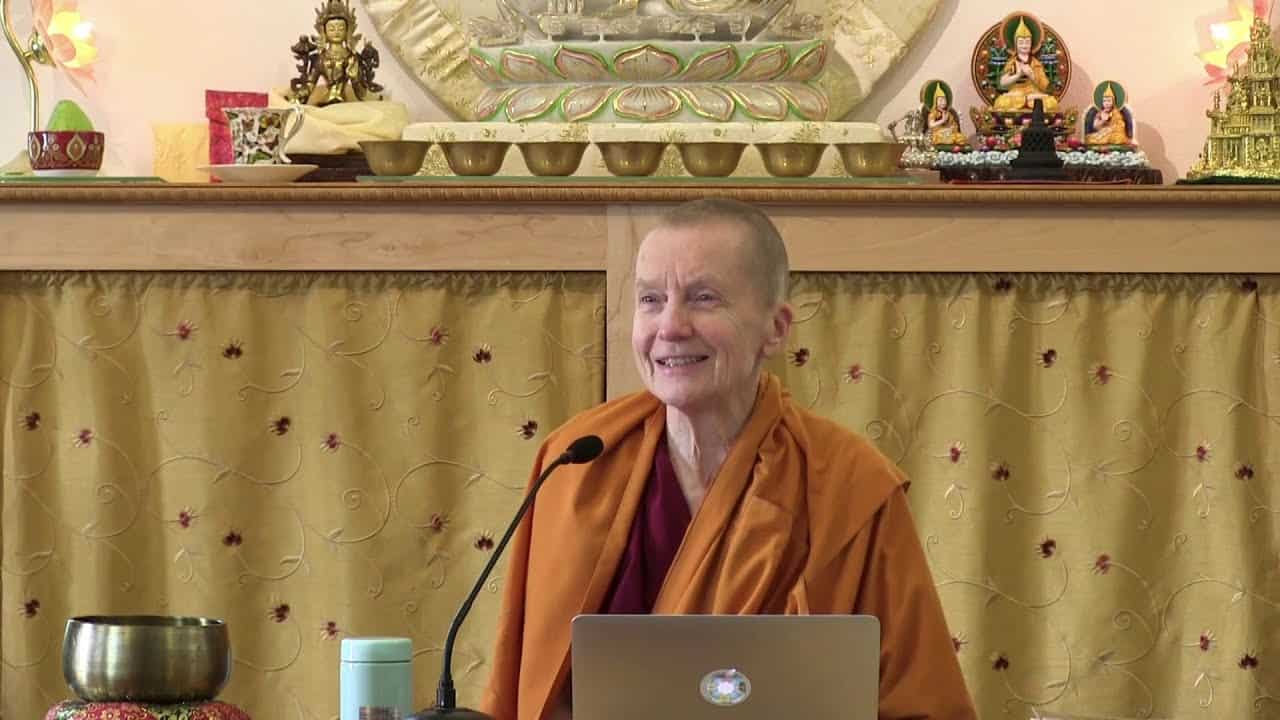The conventional existence of Tara
The conventional existence of Tara
A series of teachings by Venerable Sangye Khadro given during the Green Tara Retreat at Sravasti Abbey and offered on-line from July 3 to July 10, 2020. The teachings include talks on the Green Tara Practice and commentary on Chapter 9 of Shantideva’s Engaging in the Bodhisattva’s Deeds. During the talks Venerable Sangye Khadro refers to Notes On Green Tara Practice.
- Questions and answers
- How do we know Tara is a real being?
- Do deities conventionally exist?
- Do nagas exist?
- What is the role of using anger in our practice?
- Antidotes to jealousy
- Questions and answers
- What is the definition of a valid cognizer?
- What is the difference between a god and Tara?
- Would the idea of a creator god fail the criteria for conventional existence?
- Would names of things fail the first criteria?
Venerable Sangye Khadro
California-born, Venerable Sangye Khadro ordained as a Buddhist nun at Kopan Monastery in 1974, and is a longtime friend and colleague of Abbey founder Ven. Thubten Chodron. Ven. Sangye Khadro took the full (bhikshuni) ordination in 1988. While studying at Nalanda Monastery in France in the 1980s, she helped to start the Dorje Pamo Nunnery, along with Venerable Chodron. Venerable Sangye Khadro has studied Buddhism with many great masters including Lama Zopa Rinpoche, Lama Yeshe, His Holiness the Dalai Lama, Geshe Ngawang Dhargyey, and Khensur Jampa Tegchok. She began teaching in 1979 and was a resident teacher at Amitabha Buddhist Centre in Singapore for 11 years. She has been resident teacher at the FPMT centre in Denmark since 2016, and from 2008-2015, she followed the Masters Program at the Lama Tsong Khapa Institute in Italy. Venerable Sangye Khadro has authored several books, including the best-selling How to Meditate, now in its 17th printing, which has been translated into eight languages. She has taught at Sravasti Abbey since 2017 and is now a full-time resident.


